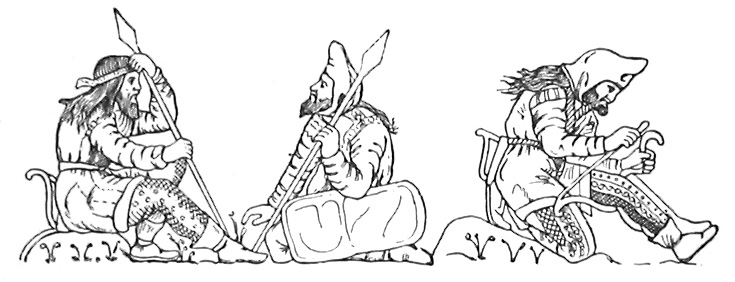

I came across a quote by Herodotus awhile back on Classical Wisdom Weekly’s facebook page. The main theme was “giant gold-digging ants.” Sounds fanciful, right? Well, behind every myth is a general truth. I think we all can agree on that. Herodotus states in The Histories book 3.102:
Besides these, there are Indians of another tribe, who border on the city of Caspatyrus, and the country of Pactyica; these people dwell northward of all the rest of the Indians, and follow nearly the same mode of life as the Bactrians. They are more warlike than any of the other tribes, and from them the men are sent forth who go to procure the gold. For it is in this part of India that the sandy desert lies. Here, in this desert, there live amid the sand great ants, in size somewhat less than dogs, but bigger than foxes. The Persian king has a number of them, which have been caught by the hunters in the land whereof we are speaking. Those ants make their dwellings under ground, and like the Hellene ants, which they very much resemble in shape, throw up sand-heaps as they burrow. Now the sand which they throw up is full of gold.1
Understand that Herodotus had never been to India or anywhere nearby. One would think that even Herodotus would have been skeptical of the supposed giant gold-digging ants. However, I could be wrong.
There may be truth to this story, not the giant ants, but men who may have looked like ants. They were not ants but Saka (Scythians) Tigraxauda.
The name Saka Tigraxauda, also Tigra-Khaud, is said to mean “Saka that wore pointed caps.” Tigra-Khaud is a corrupt form of the Sanskrit rendering of “Tigra-kakud.” When translated, Tigra-kakud means “pointed projection,” a metaphor for horns. In the northern Indian province of Kashmir, it was said that unnatural-sized ants, “Tigra-kakud,” dug for gold. This proved to be Saka wearing a horned headdress as they dug for gold and attacked anyone intruding on them like army ants. However, this description of the Saka wearing pointed hats is generic, for most Saka wore pointed hats to some degree.2 The location of the Saka Tigraxauda was east of the Caspian Sea and found between the provinces of Hyrcania and Chorasmia.3 The Saka Tigraxauda are also suggested to have been none other than the Massagetae, even though not everyone agrees that they were.4

However, another explanation comes from Herodotus once again. In book 3 passage 102-105, Herodotus mentions that the ants in question were slightly smaller than a dog but bigger than a fox. French ethnologist Michael Peissel suggests that the creature Herodotus called an ant was probably a Himalayan marmot that can be found on the Deosai Plateau in Gilgit-Baltistan province in modern-day Pakistan. This claim is because Peissel interviewed the Minaro tribe, which lived on the Deosai Plateau. Like their ancestors, the Minaro informed him that they had been collecting gold dust from the marmots that bring it to the surface when burrowing.5

In conclusion, the gold-digging ants were either Saka or marmots. While both are possible, the Himalayan marmot may very well be the fabled ant known for gold-digging.
If you wish to read a fictional about giant ants, please check out H.G. Wells’s book, “Empire of the Ants.” Check out the 1977 film if you wish. Not bad.
By Cam Rea
Notes
1. Herodotus, The Histories, 3. 102.
2. Swami Parmeshwaranand, Encyclopaedic Dictionary of Vedic Terms Vol. 2 Vol. 2. (New Delhi: Sarup & Sons, 2000), 455.
3. Guive Mirfendereski. “The Saka Nomenclature: A Persian appraisal” http://www.cais-soas.com/CAIS/Anthropology/Scythian/saka_nomenclature.htm
4. David Christian, A History of Russia, Central Asia, and Mongolia (Malden, MA: Blackwell Publishers, 1998), 130-131.
5. http://www.nytimes.com/1996/11/25/world/himalayas-offer-clue-to-legend-of-gold-digging-ants.html ; See also Michel Peissel, “The Ants’ Gold: The Discovery of the Greek El Dorado in the Himalayas”. Collins, 1984.









